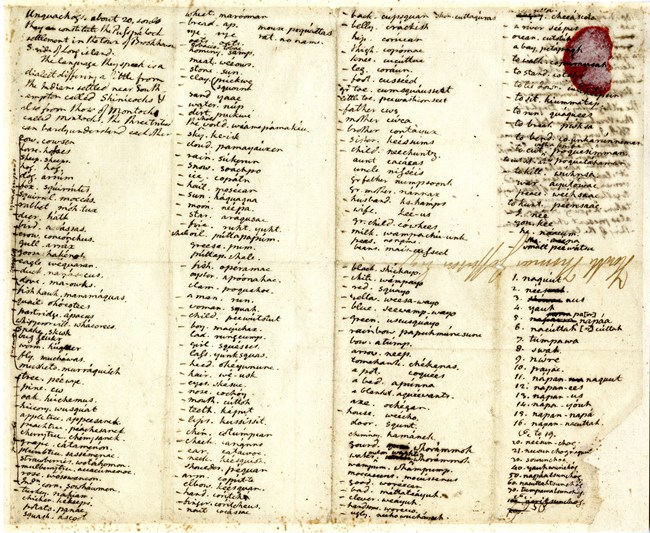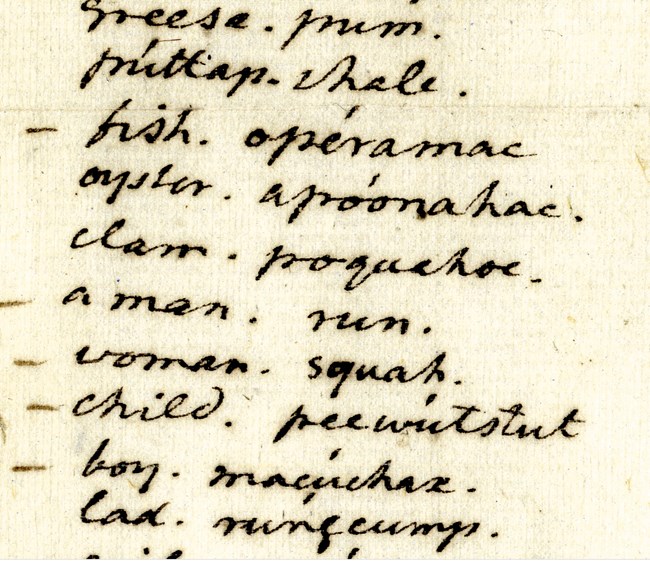Last updated: October 31, 2022
Article
Missing Indian Vocabulary Sheets

Thomas Jefferson outlined for Meriwether Lewis his expectations of the expedition to the west – one key goal was to explore the Missouri River to find “the most direct & practicable water communication across this continent for the purposes of commerce.” And a closely related objective was to “render a knolege of those people” who inhabited the route.
So, either Jefferson or Lewis (it’s not clear which) developed a gridded sheet which listed common English words in the left-hand column; to the right were blank columns where equivalent Native words could be recorded. Before his departure in August 1803, Lewis had a supply printed. The purpose of the sheets was to collect as many Native language words as possible – think of it as a database collection project of the early 18th Century.
By the time the keelboat was packed for its departure from Fort Mandan in April 1805, Lewis had collected 14 Native vocabularies for President Jefferson. And by September 1806, he had completed sheets for nine more. It was Jefferson’s ultimate plan to take all the vocabularies from Lewis and combine them with those he personally had documented (about 40), combining them into a published document to be shared with the world.
In 1809, Lewis included in his prospectus of the forthcoming journals, that the 23 Native vocabularies he collected were to be printed in the second part of his two-part, three-volume work. Of course, this never happened.
Unfortunately, as outlined in a July 1977 article in the Lewis and Clark Trail Heritage Foundation publication, “We Proceeded On,” written by Bob Saindon, due to many unfortunate events, the vocabularies were lost or destroyed before they could be released to the public. To read Mr. Saindon’s article, go to the archives of the LCTHF at: https://lewisandclark.org/wpo/pdf/vol3no3.pdf. The article begins on page 4.
Image: A vocabulary sheet created by Thomas Jefferson in about 1791 of the Unquachog Indians. Held within the collection of the American Philosophical Society.
Image Description: Two images. The first shows an entire sheet of handwritten words in Jefferson’s handwriting -- first in English, then in the language of the Unquachog Indians. There are four columns of words on the sheet. The second image is a close up of one small section of the larger image showing several words, such as “geese” (“mim” in Unquachog), “fish” (“opiramac”), and “clam” (“poquahoe”).

